Spiraling stars and light-soaking dust clouds enliven the heart of this lesser-known planetary nebula NGC 2346 in Monoceros. Will you be the first to catch it playing peekaboo again?
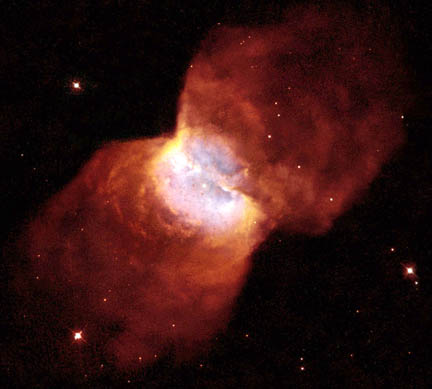
NASA / ESA
One of the reasons I get a charge out of observing variable stars is because they're always changing. I suppose that's why many of us also enjoy comets and planets. Season to season and occasionally night to night, you never know what to expect. Most deep-sky objects, on the other hand, remain unchanged in appearance over many generations.
Nothing against galaxies, star clusters, and nebulae — I could never give up on all that sparkle and fuzz — but familiarity with everything from the fast-changing to the essentially eternal makes for happy skywatching.
Both traits are combined in a small subset of nebulae that include NGC 2261 (Hubble's Variable Nebula), the two bright Cepheid variables in the globular M5, and our featured object, the bipolar planetary, NGC 2346, also referred to as the Butterfly Nebula.
With the Moon absent from the sky this coming week and the nebula well placed in Monoceros near the bright star Procyon in Canis Minor, I encourage you to drop by for a look. The Butterfly may look like its namesake in deep photographs, but in most scopes, especially at low magnification, your first impression will be of an 11th-magnitude star inside a nimbus of haze about 1′ across. The central star is so bright you may not even notice the planetary nebula at first. Use averted vision and increase the magnification to 100×, and it should be obvious in 8-inch and larger scopes.
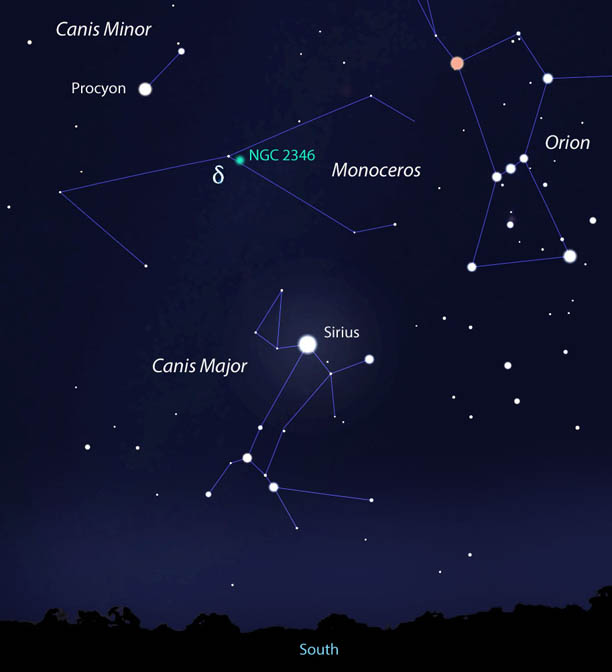
Stellarium
Higher magnification paired with a nebula filter to boost contrast reveals the nebula's oval shape and other delicate details. In my 15-inch (37-cm) scope with a UHC filter, I see a dark vacancy around the central star and indistinct, brighter patches of light at either end of a hazy oval elongated northeast-southwest. Hints of bipolar structure appear as faint extensions north and south of the main nebula with the northern lobe more obvious.
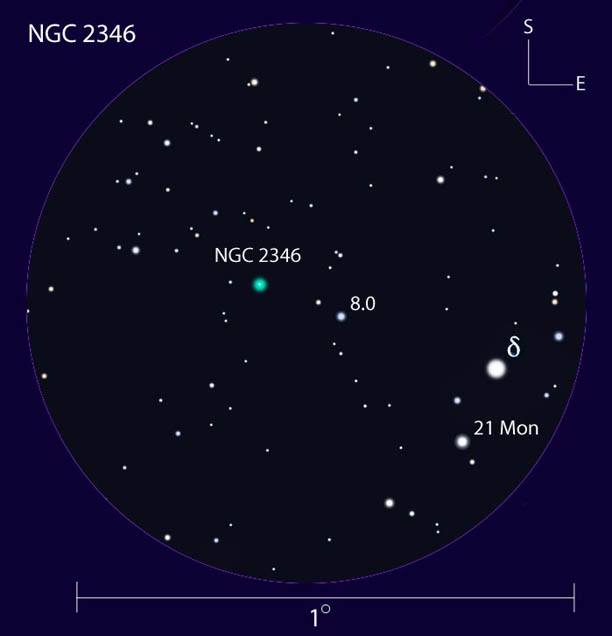
Stellarium with additions by the author
On late winter nights in 2016, NGC 2346's central star shines steady and serene, but it wasn't always so. In 1981–85, 1996–97, and most recently in 2004, the star plummeted to 15th magnitude — near-invisibility in most amateur scopes — then shot back up to 11 or 11.5. Since I'd followed the nebula for years, it was a shock to see such dramatic changes play out over just days, weeks, and ultimately years.
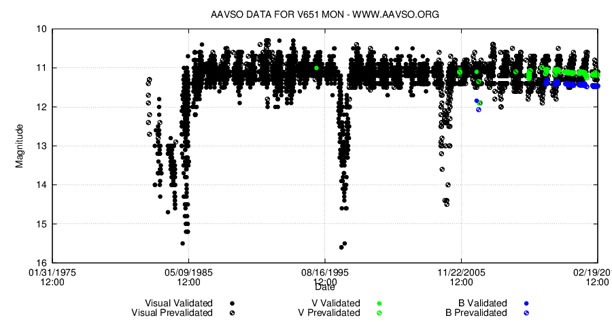
AAVSO
Why the quixotic behavior? The planetary's central star is actually a spectroscopic binary comprised of a main sequence A5 star and a small, hot subdwarf; together, the pair is known as the variable system V651 Mon. The duo revolve about their common center of gravity with a period of 16 days. Although we see their combined light as the nebula's central star, the biggest contributor is the brighter A5 star.
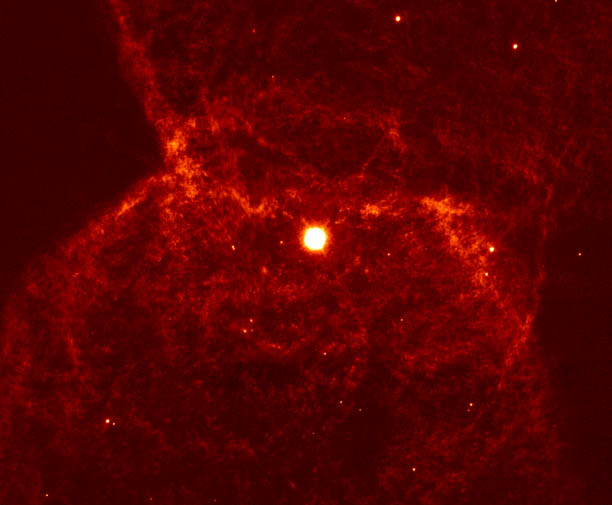
GeMS / GSAOI Multi-Conjugate Adaptive Optics System
Long ago, when the larger of the two stars (the current subdwarf) evolved into a billowing red giant, it enveloped the secondary, causing the two to spiral in closer and closer. In the process, the giant ejected clouds of dust that formed a ring around the system. Later, as the red giant puffed away its outer envelope in the process of becoming a planetary nebula, the dust ballooned out perpendicular to the ring to form the double bubble we see today.
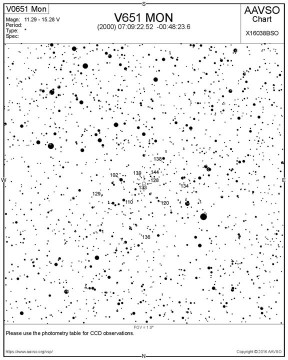
AAVSO
William Herschel discovered NGC 2346 in 1795. We know from examination of older photographic plates that V651 burned with a steady light from at least 1899 to 1981. Then it suddenly faded and struggled for four years to return to its former brightness. Shorter episodes occurred in 1996–97 (~400 days) and in 2004 (~300 days).
Astronomers attribute the star's temporary blackouts to passing clouds of dust disgorged by the red giant, drifting in front of the binary and blocking it from view. Early on in the 1980s, the central star repeatedly brightened and dimmed from 11th to 15th magnitude with a 16-day period as it regularly "popped its head" out from behind the cloud while orbiting its companion. Estimates of the cloud's size range from about 12 to 30 million miles (19 to 48 million km) across.
Simply by watching the fading and re-brightening of NGC 2346's central star, we were allowed a rare glimpse into the dusty, turbulent environment of a newly-forming planetary nebula. How wonderful to see an astronomical event unfold over days and weeks instead of eternity!
It gets better. During the 1996 dimming, the central star briefly re-brightened by two magnitudes for a couple weeks before fading back to around 14.5 magnitude, an event Japanese astronomers at Kyoto University interpreted as a partial clearing within the obscuring cloud. You can read more about their findings in this 2001 paper.
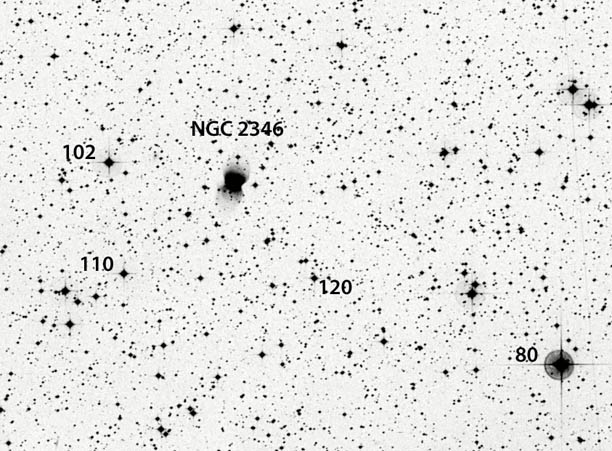
DSS
No one can say if and when NGC 2346 will again appear starless. Since the last significant episode occurred nearly a dozen years ago, perhaps it's overdue. That's why I regularly visit this obscure planetary on winter and spring evenings. Give it a try sometime. Who knows — you might be the first to catch it playing peekaboo again!
 0
0
Comments
You must be logged in to post a comment.